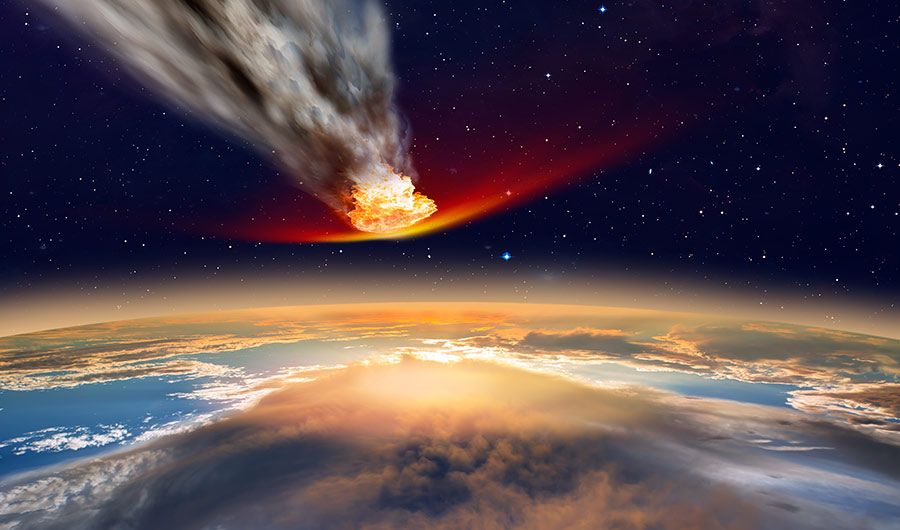Apocalypse How-To? Better Science Fiction Stories About Threats to Humanity

muratart/Shutterstock
(Inside Science) -- Which science fiction movies, TV shows, and comic books give a realistic portrayal of the consequences of "antibiotic resistance"? None, said Jessica Petrillo, a State Department senior health security officer. There's a dearth of stories exploring how overusing antibiotics is fueling drug-resistant diseases that kill more and more people every year, she said. Her first goal is to try to raise awareness of the global problem, including through "comic book diplomacy."
That’s an extreme case, but a panel of government agents and scientists at San Diego's Comic-Con last Friday argued that science fiction writers and artists can craft better stories about disasters that could imperil civilization. The possibility of a coming apocalypse pervades science fiction today, but how likely are those possibilities in the next few decades or the next century? These experts tried to figure out how nuclear proliferation, killer asteroids and pandemics might actually arise.
Take nuclear terrorism. Many movies and TV programs, including "24," make it appear almost easy to acquire or engineer nuclear devices. But countries typically hold such devices with the highest security measures, such that maybe only a terrorist organization with the capabilities of SPECTRE from the James Bond movies or The Syndicate in the DC Comics universe could get around them, said Gregory Bernard, a Department of Homeland Security officer. And nuclear forensics tracking efforts can follow the spread of nuclear material, deterring states from engaging in nuclear proliferation and giving it away to terrorists. Most nuclear devices are also huge, about the size of a refrigerator -- accurately depicted in "The Sum of All Fears" -- which makes them hard to move.
More stories about science fiction from Inside Science
Making The Science Fiction Of 'Star Trek' A Reality
How Science Experts Make Movies Better
Science Fiction Pioneer H.G. Wells Turns 150
Overall, Bernard thought the show "Chernobyl" did a really good job, though in one scene it conflated radiation "exposure" and "contamination." To explain the difference, he made an analogy: "If you can smell dog poop, you are exposed, but if it is on you, you are contaminated. If you’re exposed, you can walk away, and you’re not going to spread the smell to other people," he said.
If a typical thermonuclear weapon actually blew up, it would destroy at least many city blocks, and Spider-Man and Doctor Manhattan notwithstanding, "the U.S. government has not identified any superpowers manifested as a result of exposure to radioactive material," Bernard said. Within the blast zone, you can't protect yourself by hiding in a fridge, despite what happened in "Indiana Jones and the Kingdom of the Crystal Skull." Beyond that range though, to protect against the danger of radiation it’s better to get inside for at least 24 hours, take off your contaminated clothes, and take a shower.
When it comes to asteroid impacts, it's best to get inside then, too, said Joe Masiero, group supervisor of near-Earth object survey projects at NASA’s Jet Propulsion Laboratory in Pasadena. Most asteroids that can make it through our atmosphere are hard to track and small -- around 100 meters in diameter, he said. The 2013 Chelyabinsk impact in Russia is a good example of what can happen when one does make it through. There were no reported deaths, yet numerous people gawking out their windows suffered injuries as the blast wave blew glass in their faces.
On the other hand, the handful of asteroids big enough to wipe out humans, like in the movies "Armageddon" and "Deep Impact," have already been found, and they're not on collision courses. NASA doesn't think they have missed any.
Comets occasionally collide with the Earth too, and one that makes it to our planet’s surface might bring alien organic material, which could one day evolve into a life form. But a live alien organism, once having left its original planetary environment -- à la "The Andromeda Strain" -- would most likely die long before it gets here, said Elaine Seasly, NASA's deputy planetary protection officer.
The pathogens we should worry about are already on Earth, said Petrillo, the health security officer. When someone takes antibiotics to combat an infection, they kill off most pathogens in their body, but the strongest ones can survive the treatment and spread. After surviving multiple treatments, the pathogen could turn into one that dangerously resists all known antibiotics. The problem has even led some people to envision a "post-antibiotic world," where, say, a scrape on one's leg could become infected and, without effective medicines to kill the offending bacteria, become fatal. Yet relatively few people are aware of the problem, but there's an opportunity for comic book artists to rectify that, she argued.
In any case, despite the occasional criticisms from these Comic-Con panelists, they're all sci-fi fans and appreciate its cultural influence. "Science fiction allows us to go through that creative process, asking more questions, which can help inspire us and inform us where to take science and engineering further," Seasly said.

